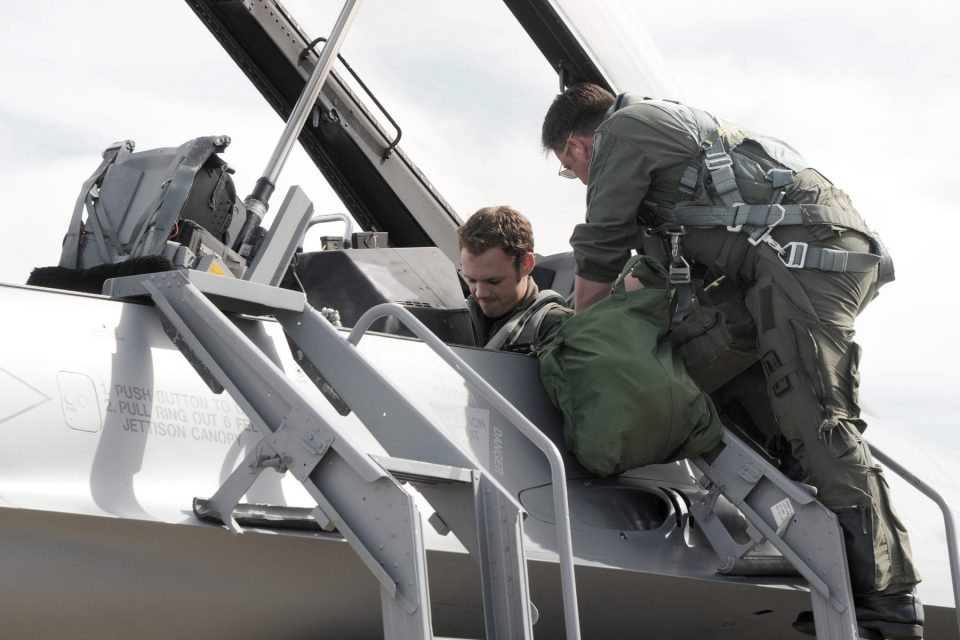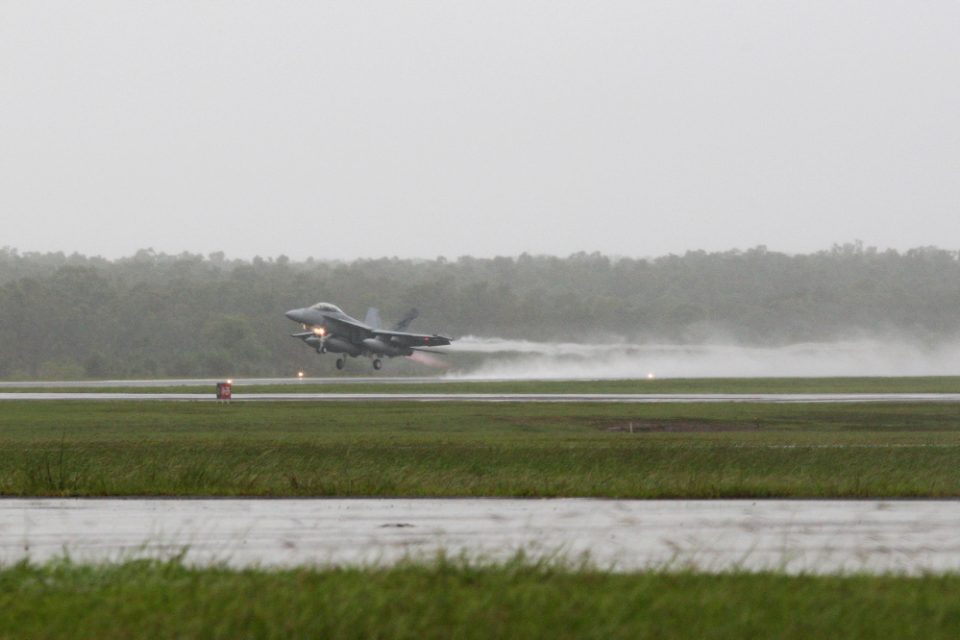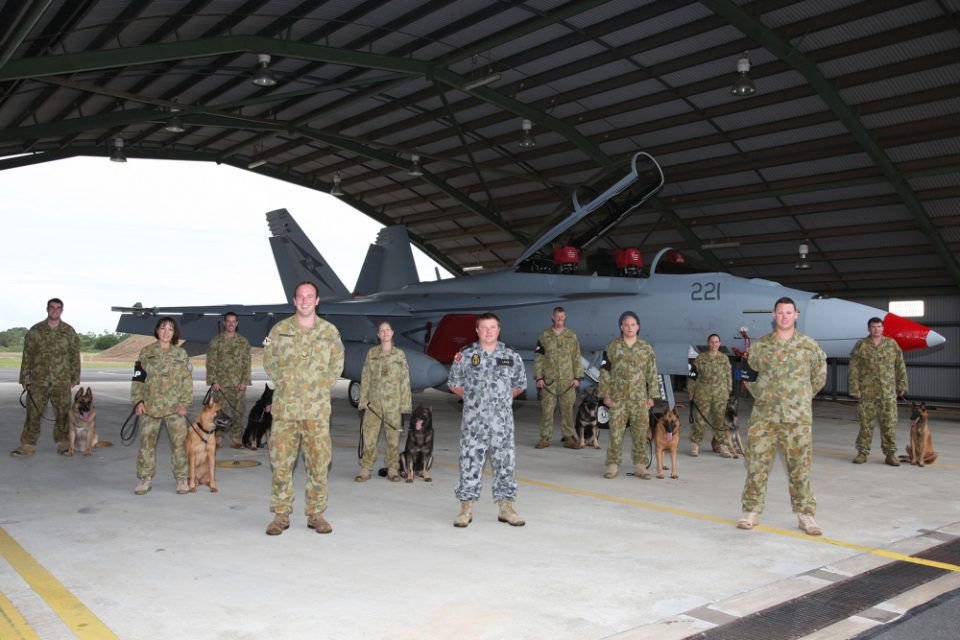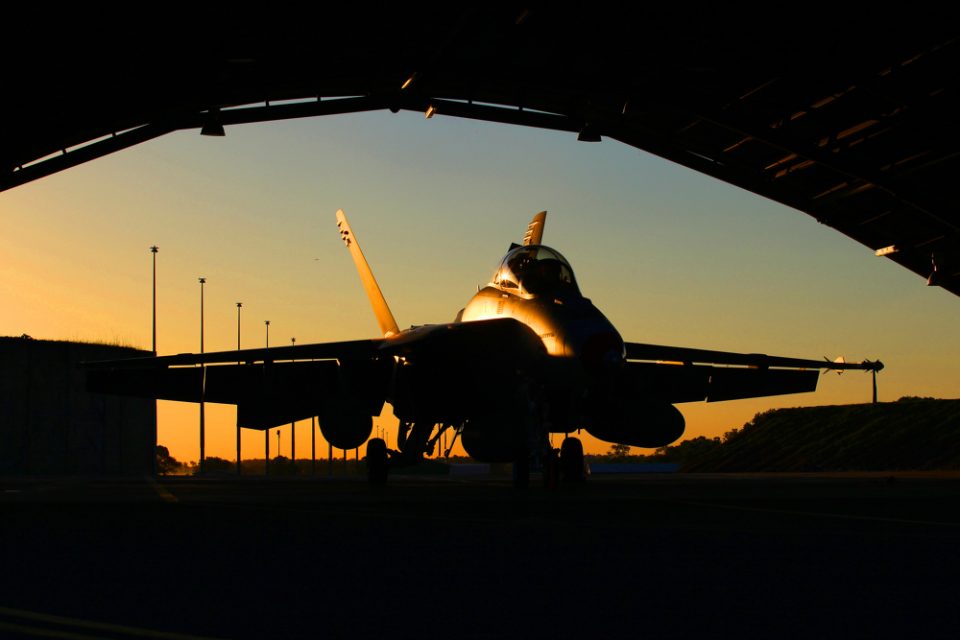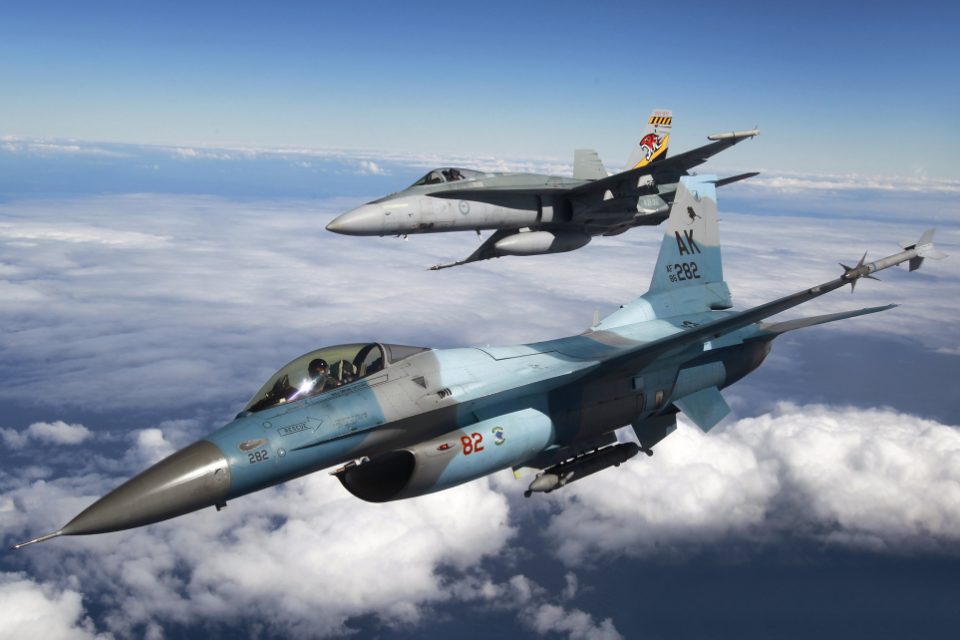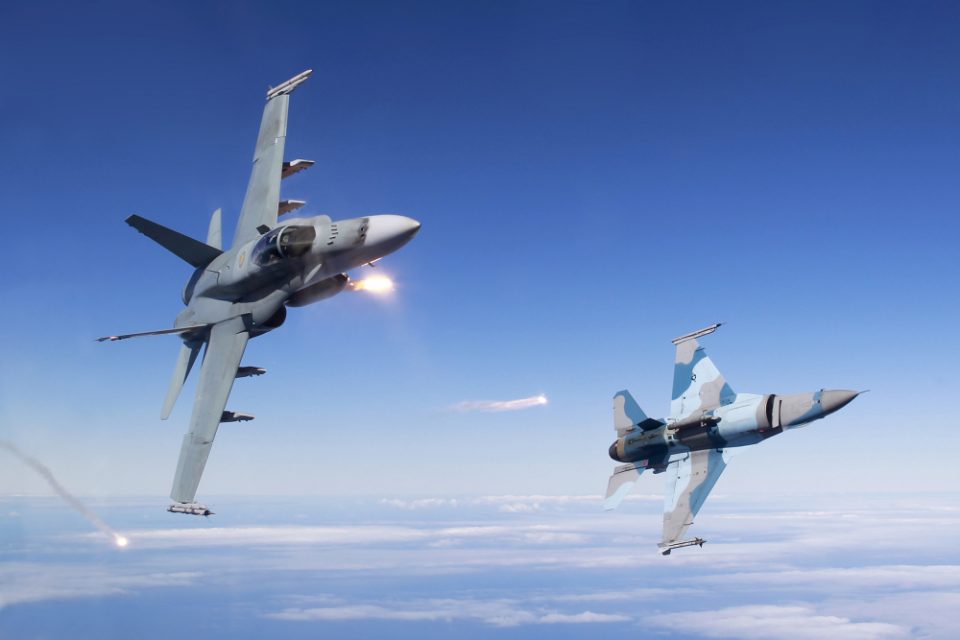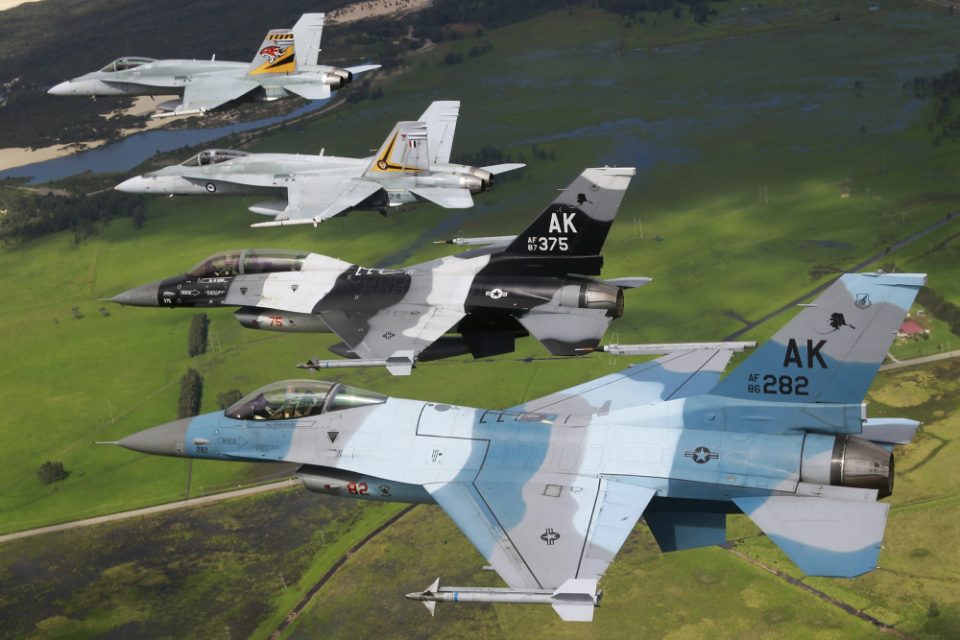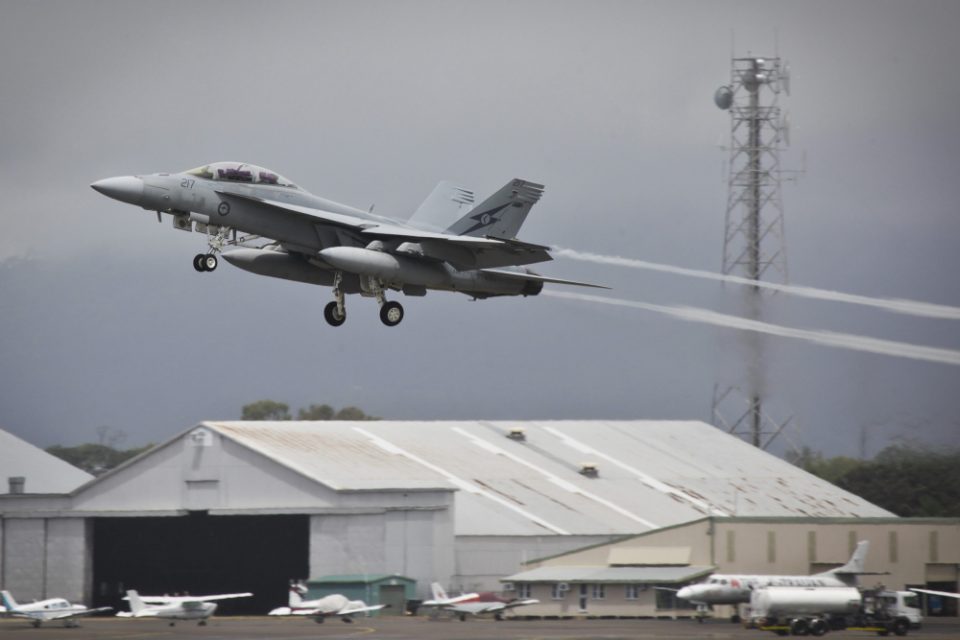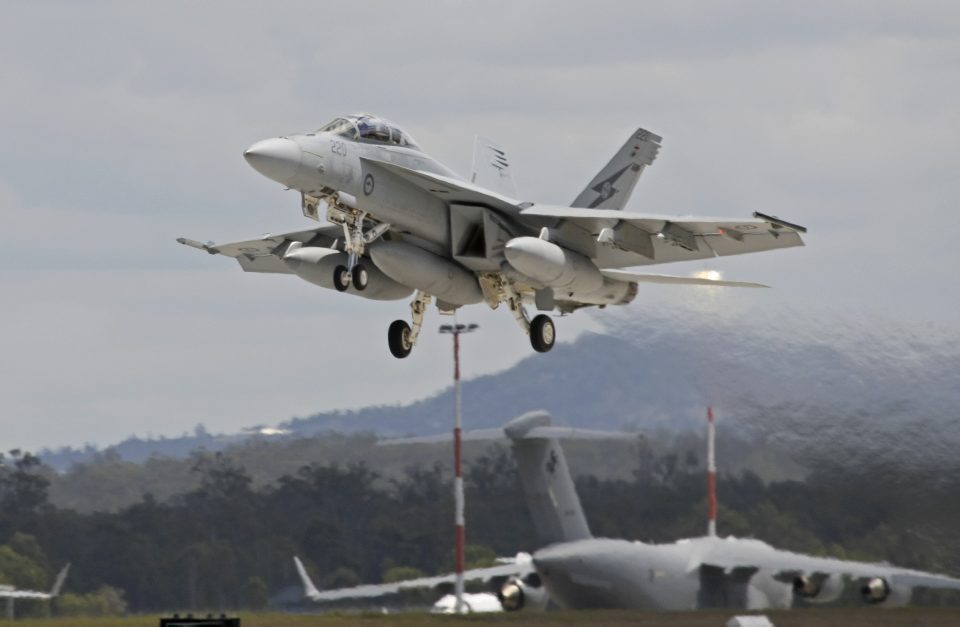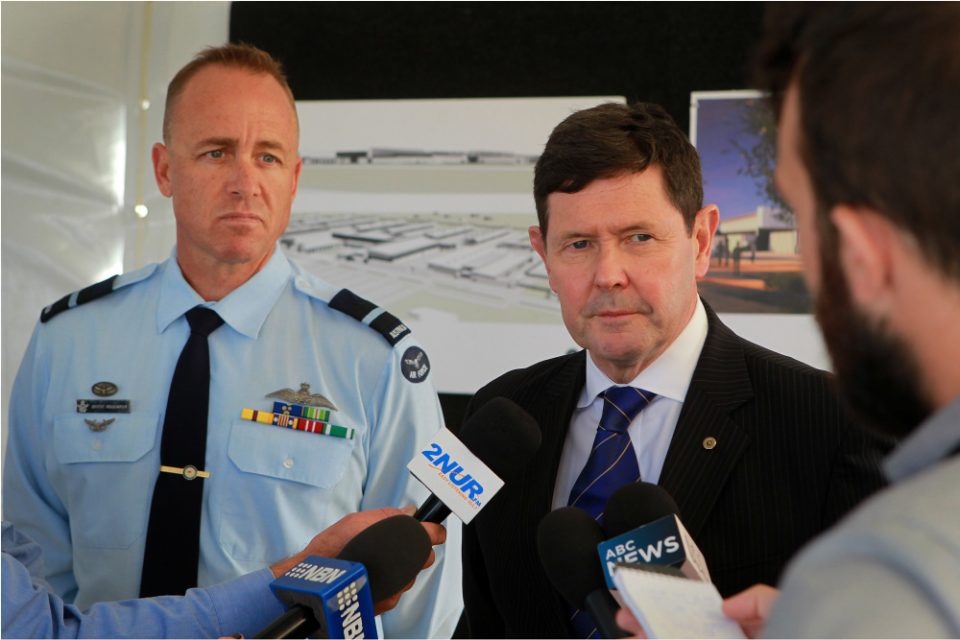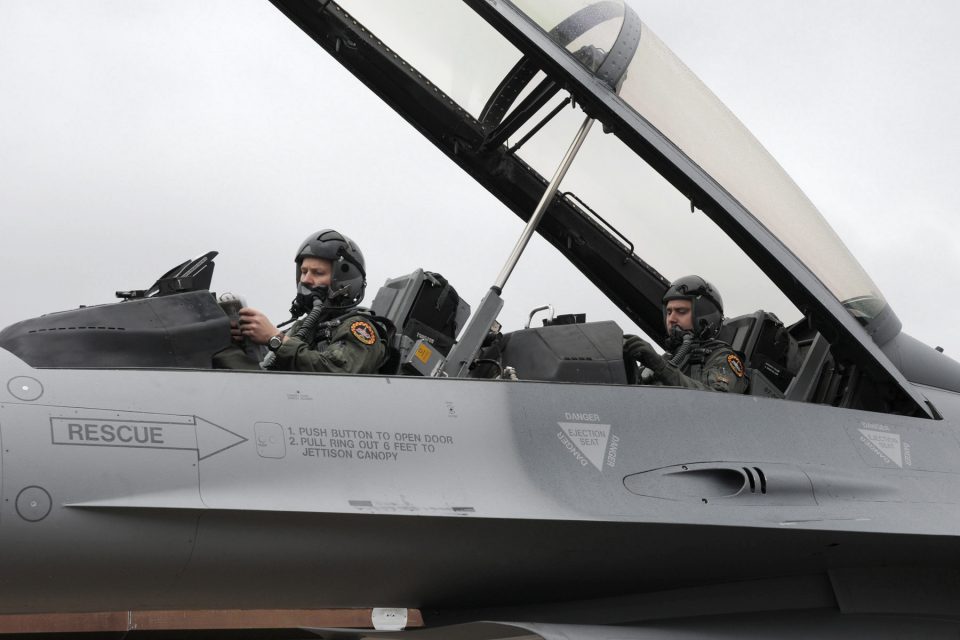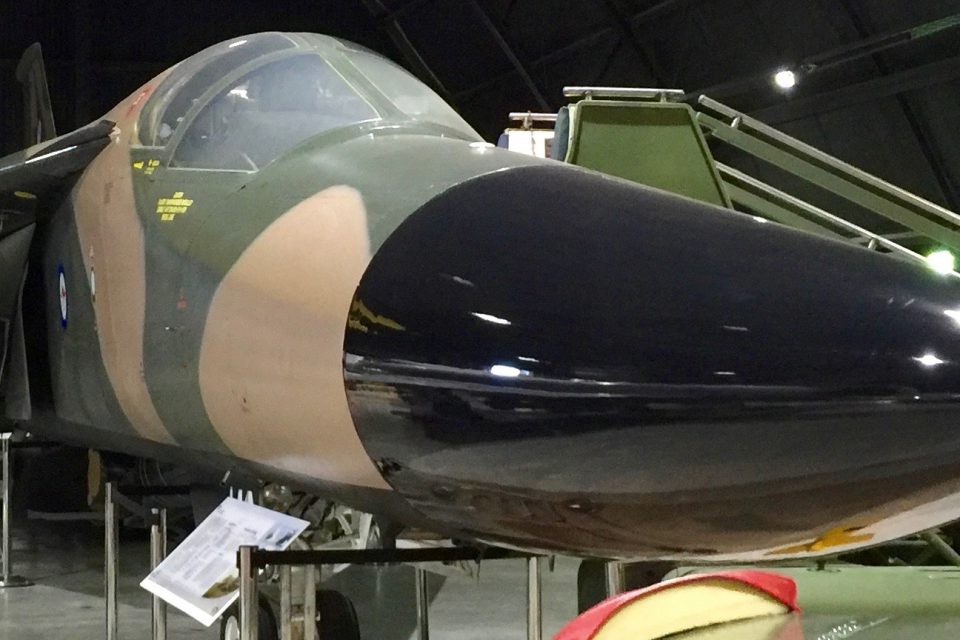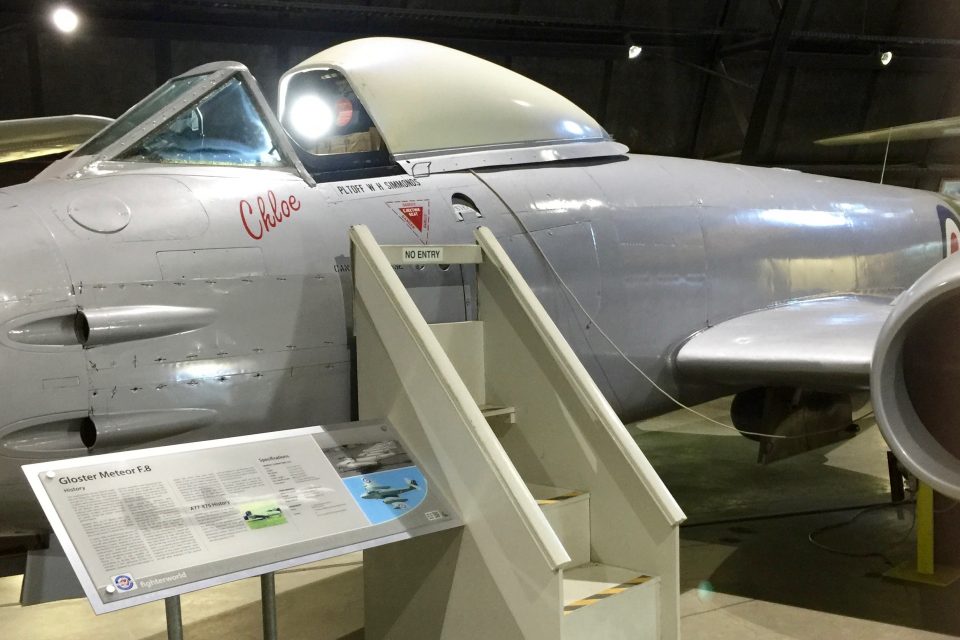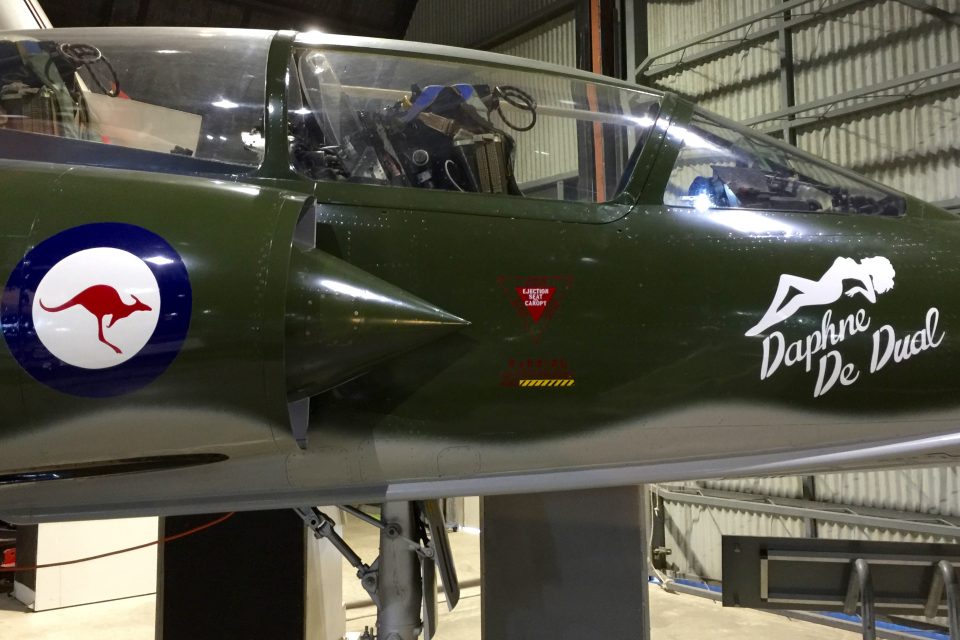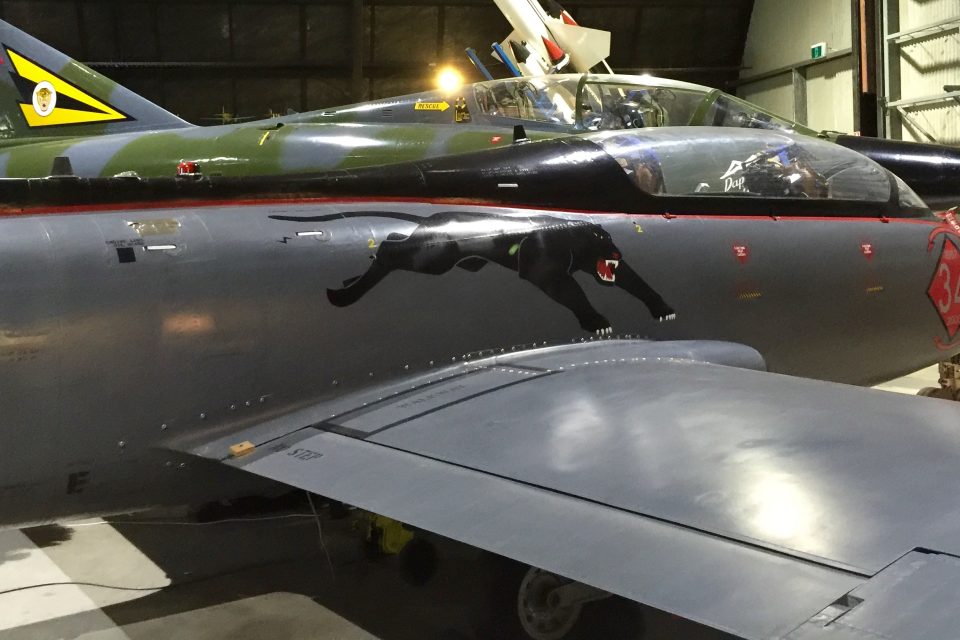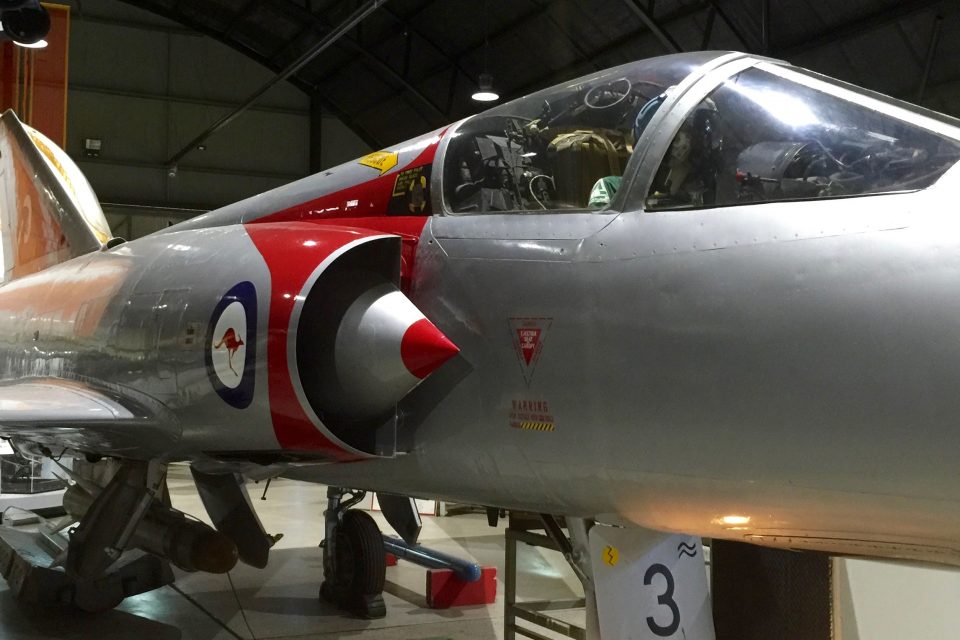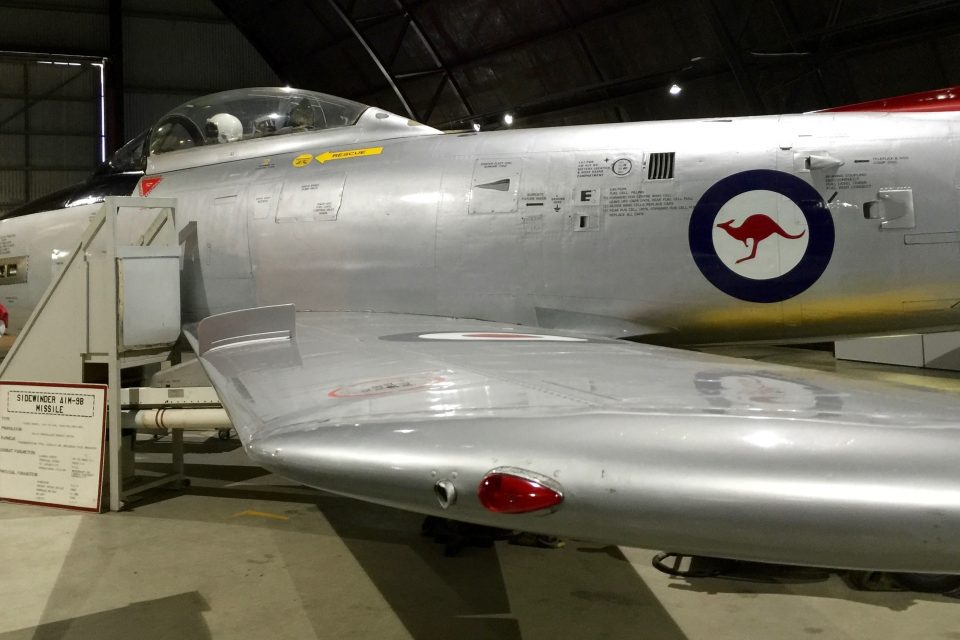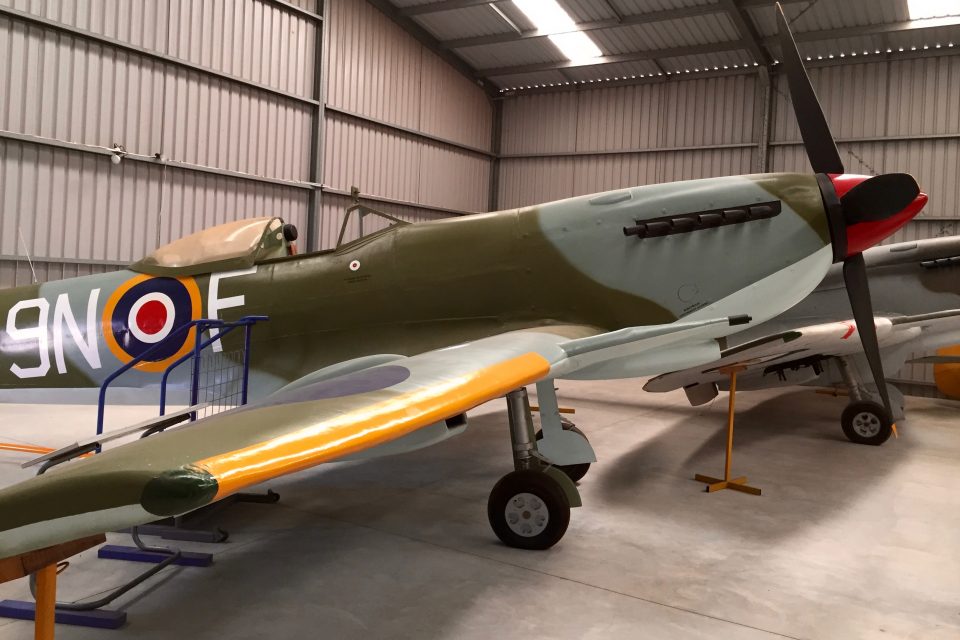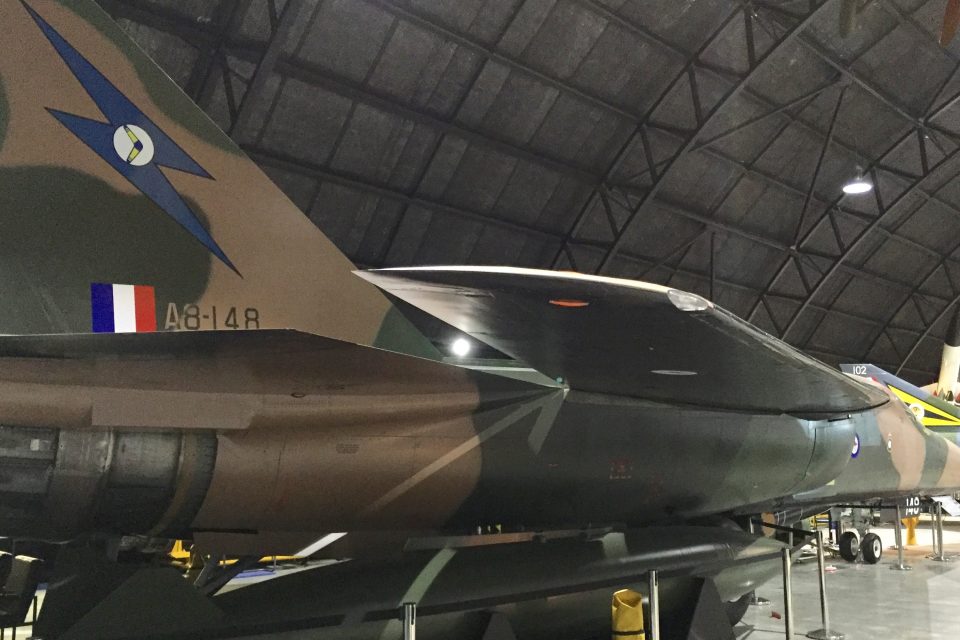2016-03-25 By Robbin Laird
The RAAF’s Williamtown Air Base is the home of key current combat assets, the historic home of several legacy air assets, and the future home of a major part of the F-35 capability.
This was my third visit to the base, the first being to 2nd Squadron, home of the Wedgetail, the second to the Surveillance Response Group and this year to visit the Commander, Air Combat Group, Air Commodore Steve “Zed” Roberton.
According to the RAAF Website:
The Royal Australian Air Force is proud to have been a part of the Hunter since the late 1930s when the Defence Practice Area was first designated at Williamtown.
Defence looks forward to continuing its positive relationship with the local community. It is Air Force’s intent that RAAF Base Williamtown remain as the nation’s main fighter pilot training base, and it will house most of the planned F-35 Joint Strike Fighter Lightning aircraft.
RAAF Base Williamtown is the home base for the tactical fighter element of the Air Combat Group (ACG) and the Airborne Early Warning and Control (AEW&C) element of Surveillance and Response Group (SRG).
The following squadrons are based at Williamtown:
No 453 Squadron (453SQN) Williamtown Flight
No 3 Squadron (3SQN) operating F/A-18 Hornet aircraft
No 77 Squadron (77SQN) operating F/A-18 Hornet aircraft
No 2 Operational Conversion Unit (2OCU) operating F/A-18 Hornet aircraft
No 76 Squadron (76SQN) operating Hawk Mk127 aircraft
No 4 Squadron (4SQN) operating PC-9/A Forward Air Control aircraft
No 2 Squadron (2SQN) operating AEW&C Wedgetail aircraft
No 2 Expeditionary Health Squadron, Headquarters
1 CCS (Combat Support Squadron) Detachment Williamtown
No 453 Squadron (453SQN) Headquarters
No 26 (City of Newcastle) Squadron – Airbase Operations
No 381 Squadron – Contigency Response
No 1 Security Force Squadron, Headquarters
When you go to the visitor’s center you are greeted by a plaque, which tells the history of the RAAF base, which was first established to deal with the Japanese threat in the 1940s.
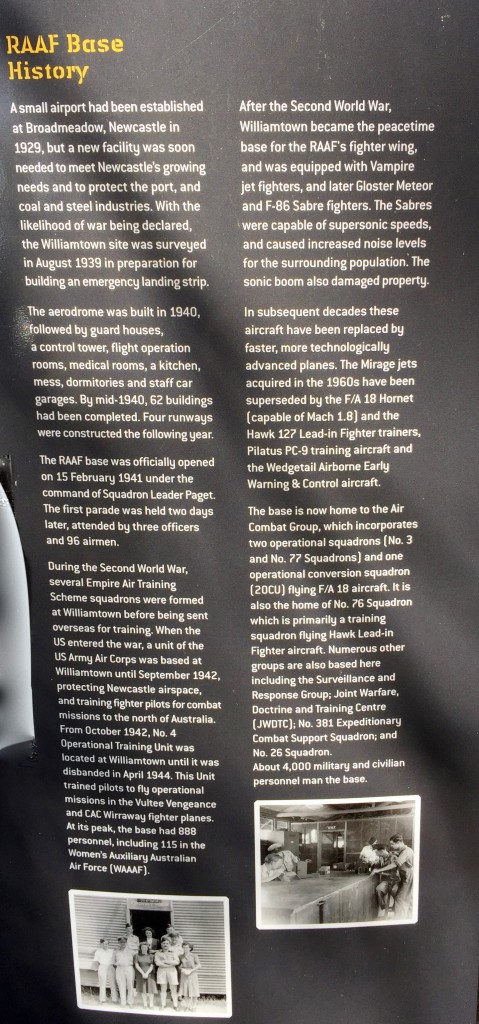
RAAF Station Williamtown was established on 15 February 1941 to provide protection for the strategic port and steel manufacturing facilities of the Hunter Region.
The base was initially served by four runways, each 1,100 m (3,600 ft) in length to meet the needs of the Williamtown Flying School.
The School consisted of 62 buildings which accommodates 366 officers and men.
A number of Australian Empire Air Training Scheme squadrons were formed at Williamtown before proceeding overseas and No. 4 Operational Training Unit was located at Williamtown from October 1942 until the unit was disbanded in April 1944.
Following World War II Williamtown was retained as the RAAF’s main fighter base and was equipped with squadrons of Gloster Meteor and F-86 Sabre fighters.[3]
https://en.wikipedia.org/wiki/RAAF_Base_Williamtown
While waiting for my meeting with Air Commodore Roberton, I ate at the end of one of the flight runways and watched the Super Hornets and Hornets land and take off from the base.
And then I visited the Fighterworld Museum which houses several classic aircraft from the storied past of the Royal Australian Air Force, including the F-111, the Mirages and Spitfires flown by the RAAF and the only type of jet fighter flown by the allies in World War II, the Gloster Meteor.
We will publish Air Commodore Roberton’s interview in due course, but after the interview, I was given a tour of the base by a senior security officer who has served for many years (39 years in the RAAF) as a senior mechanic.
He highlighted the changes at the base associated with the coming of the F-35. He noted that the changes were triggered by the F-35, but many of these changes were overdue to upgrade the airbase over all.
When the Minister of Defence spoke last week at the Airpower Conference, she highlighted the importance of investments in the enablers for airpower. One of those enablers is clearly the infrastructure to support air operations.
It is clear from the tour that Williamtown’s future is being shaped by its preparation for the F-35, but more than that, leveraging the coming of the F-35 to prepare for the next fifty years of military aviation.
Around 1.5 billion dollars is being in the Williamtown airbase infrastructure; including hangars, maintenance and support facilities and lengthening the runway to 10,000 feet to mitigate any noise concerns in the surrounding community.
The first building, which has been built, was an intelligence facility to handle the information coming off of the aircraft, either in terms of mission or maintenance data.
The airfield is being expanded and bulldozers and grading equipment was seen adjacent to the commercial airport. This airport is leased from the RAAF facility and in terms of crisis could be taken over by the RAAF and used to support their operations.
In addition, base housing will be rebuilt and moved to another part of the base.
As the security officer noted: “We are building for the fifty years ahead, and not just for the next couple of years.”
He argued that as the F-35 would come into operations, the new infrastructure would support new approaches, and those approaches would in turn prepare the future, notably as unmanned assets are added to the fleet.
A key problem for the air base is that it is located in an area with the ground water level very close to the surface.
In fact, as one travels the base one can see patches of ground water, which look like lakes, but actually are the ground water level.
“You would not want to keep a KC-10 on the base all that long,” my guide warned!
In an article published by Robert Virtue (with Aaron Keraney) for ABC news Newcastle in May 6, 2015, the program of construction was highlighted.
But north of the Hunter River, at Williamtown, an investment of a similar magnitude begins today – a $1.5b upgrade of the Royal Australian Air Force (RAAF) base, in preparation for the delivery of the military’s order of new F-35A Lightning II (also known as ‘Joint Strike Fighter’) jet aircraft.
The Minister for Defence, Kevin Andrews, along with other senior members of the military will turn the first sod in a ceremony this afternoon.
How significant an investment is the upgrade?
The billion-and-a-half dollar works will go towards building new facilities at Williamtown to house the Joint Strike Fighters, the first of which is set to arrive in Australia in 2018.
The base has been in operation since the late 1930s, and was kept as the country’s main fighter base after WWII – a purpose it has retained since.
Air Combat Group commander at the Williamtown RAAF base, Air Commodore Steve Roberton says it’s a new era in the Hunter region’s association with the defence force.
“It (Williamtown) has really been the centrepiece for Australian defence, and the Royal Australian Air Force,” he says.
“This [work] is pretty significant for us.”
As part of the construction, the runway will be extended by just over 600m. A number of other facilities, including taxiways and buildings will also be built.
“These new facilities are largely over at the back of the military side of the airport. In fact, as people land on the runway [at the airport], you will be able to see these new works,” says Air Commodore Roberton.
“Many of the old buildings at the front have lost their purpose, but they’re also heritage-listed.
“[The upgrades] will make the place a lot more functional and a lot more modern, and able to house the high security arrangements we need for such a modern strike fighter.”
Along with the look of the base changing, the main entrance will be moved further north along Medowie Road.
Timeline
Today’s sod-turning marks the start of a long construction process, expected to take years.
Currently 3,500 people work on the base and during the construction, an extra 950 people (mainly contractors) are set to work there.
Construction on the runway extension and other facilities will begin in the coming days.
Over the next few years, the current Hornet Squadrons will morph into the F-35A Squadrons (once the Joint Strike Fighters arrive) through 2018 to 2019.
The works should be completed by 2020 to 2021.
With an already-busy civil airport, along with existing military aircraft noise emanating from the Williamtown site, Air Commodore Steve Roberton says residents of the Port Stephens area have been extensively consulted on the works and the transforming role of the base.
He says the RAAF welcomes the continued growth of the Hunter region.
“The changes are very much necessary, and every effort is being made to minimise the impact on anybody locally.
“With the Joint Strike Fighters being introduced [it] represents a bit of an opportunity for even more industry and employment in this region. It does represent a fairly long continuity of work over the next six years or so.
“It’s very much about, this is the Newcastle region, this is our Air Force: and this is our base.”
http://www.abc.net.au/local/stories/2015/05/06/4230446.htm
The first slideshow above show fighters at Williamtown or from Williamtown engaged in various activities and are credited to the Australian Ministry of Defence.
There is also a photo of Air Commodore Roberton and the former Minister of Defence visiting the base.
The second slideshow are photos taken at the Fighterown museum and are credited to Second Line of Defense.
For a report which looks at the F-35 and infrastructure in Australia see the following:



